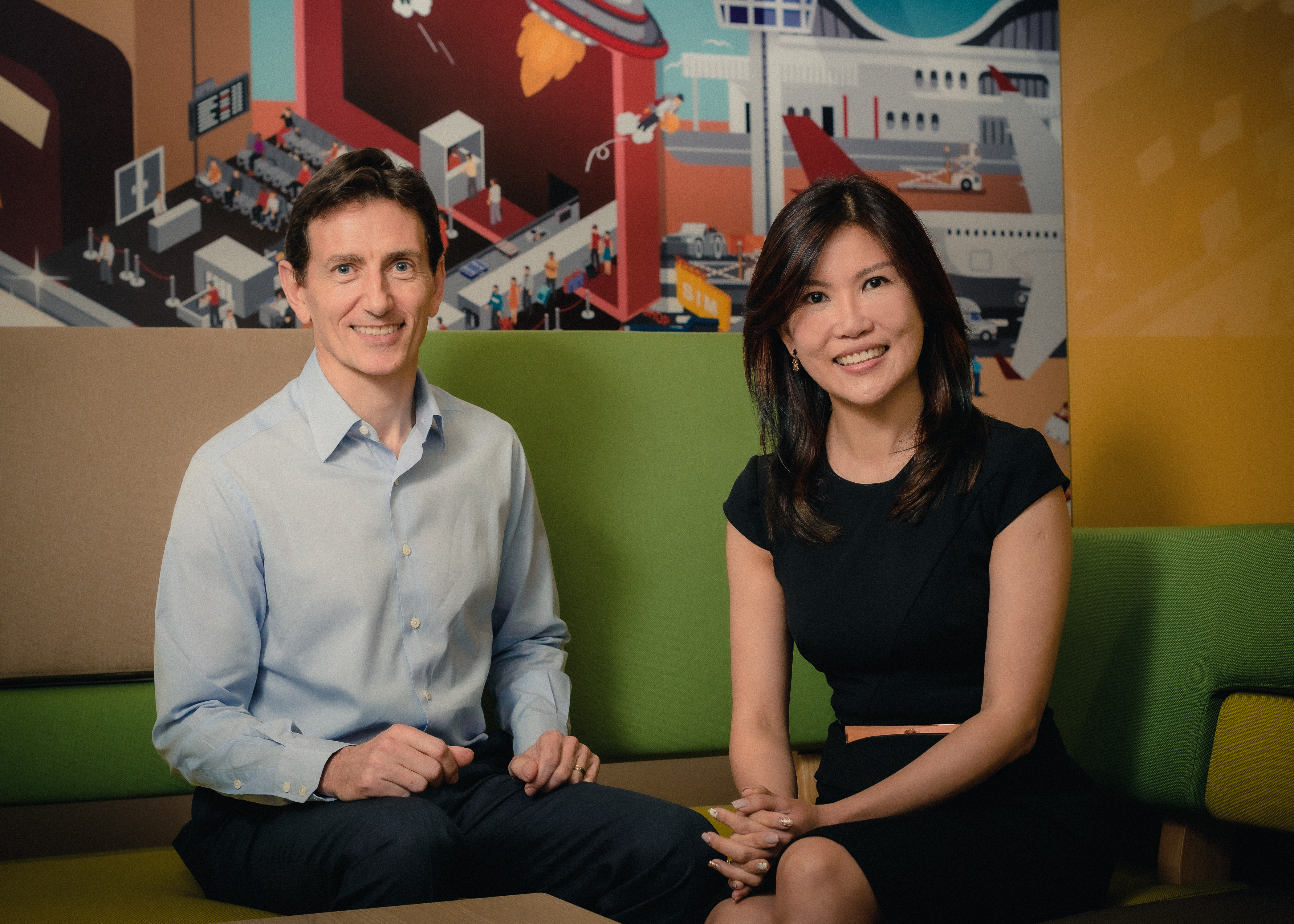SATS transforming itself through technology and culture
In the second part of our exclusive feature on airline services giant SATS, we talk to CEO Alex Hungate and Head of HR Lilian Tan about the cultural and digital transformation happening within the company. Hungate is keen to bring a start-up culture to the global company. Read part one of our feature here.

It’s refreshing to see a CEO and head of HR work so closely together. That ”seat at the table” is definitely in evidence at SATS. And it’s no coincidence to see the airline services firm clean up at last year’s Singapore HR Awards ceremony, winning no fewer than 11 trophies.
Head of HR Lilian Tan says her and CEO Hungate are very much on the same wavelength. This collaboration is crucial as the navigate a digital and cultural transformation across a workforce of more than 17,000 and growing.
Having such a strong advocate for HR in a CEO makes Tan’s job much smoother. Not only do they work closely, but they also sit closely together at SATS headquarters at Changi Airport in Singapore.
“In order to embrace change, we need people to think differently about their roles as leaders in the organisation. We talk about being courageous but combining that with open-mindedness,” she says.
Part of this new way of thinking is for staff to become “outcome-orientated,” and think more about the end objective with every challenge. “When you are talking about tens of thousands of people across many countries, you obviously need some universal way of getting people to march in the same direction and not pull against each other,” Hungate says.
To achieve this new mindset across the workforce, SATS is creating an environment where all the innovation happens “bottom-up”. It is focusing on enabling people to make those key decisions in the right environment.
Hungate says this is part of a long-term strategy to apply start-up style thinking to the much larger and more established air services business. “I used to work in smaller companies and the strength of them was that, while they have limited resources, the one thing they have is they can turn on a dime, and reverse course,” he says.
“That kind of agility is necessary to be successful today because of the pace of change. At SATS, we knew we couldn’t lumber along and be a big dinosaur.”
But bringing Silicon Valley-style agility to SATS won’t happen overnight, and mistakes will be learned along the way as processes are sped up. “It’s a journey. The challenges we have now is how fast we can move without breaking.
Every time you move fast, you are taking risks, and the trade-off is about finding what’s possible while still operating safely and with the highest service standards.”
You’d expect her to have a huge team to help look after more than 17,000 employees. But Tan’s team is surprisingly lean at fewer than 15 people (although that rises to around 80 when she adds in those that HR leaders that sit within SATS’ many joint ventures and partnerships).
Tan admits that this calls for a “tremendous amount of productivity,” but having an executive leader who is a champion of the people management function makes it all possible. “It helps us easily articulate the business strategy of our CEO,” she says. “When you have that, you will really make the HR team super-engaged and excited.”



